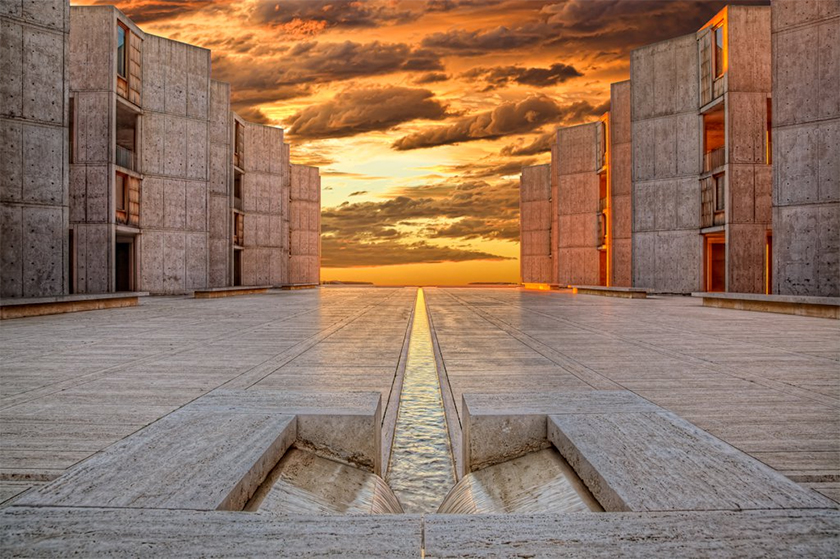
The amazing design of the Salk Institute was completed in 1965. The institute offers free architectural tours each workday at noon. Public concert and community outreach programs are also performed at the location.
Image courtesy of: San Diego Reader
As if La Jolla isn’t gorgeous enough, Louis Kahn’s Salk Institute adds even more beauty. It was in 1959 when the man who discovered the vaccine for polio approached the esteemed architect with an idea for a project.
The city of San Diego had gifted Salk with a beautiful piece of land along the Pacific Coast in La Jolla. This was the specific area where Salk intended on founding a biological research center. Salk had his own ideas about the design… as he told his chosen architect, “create a facility worthy of a visit by Picasso.” Enough said!
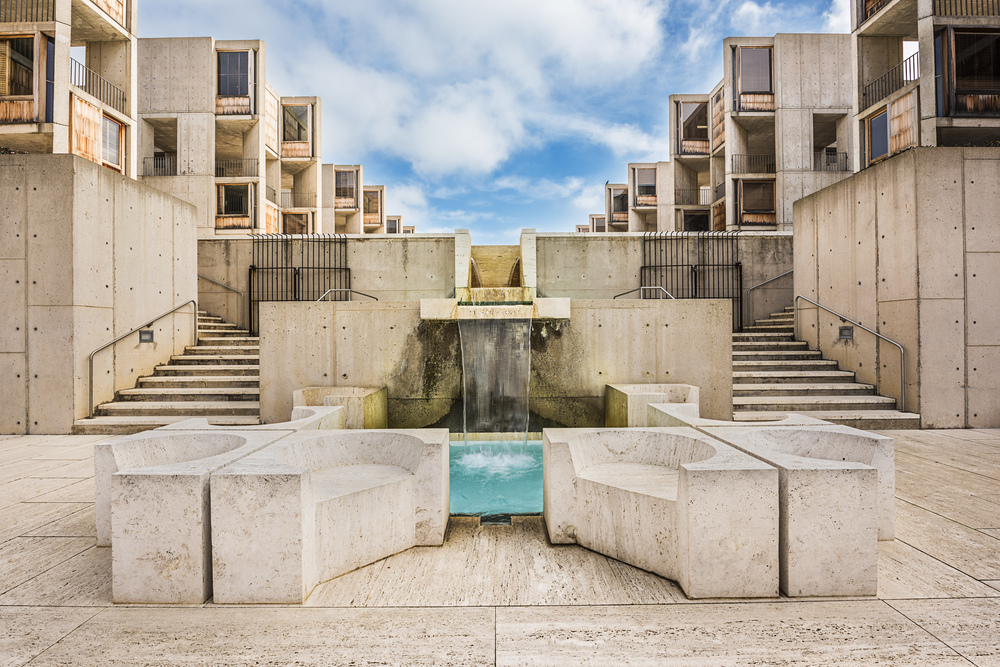
Salk wanted to create a campus in a beautiful location in hopes that world-class scientists from around the world would want to come there to perform their research.
Image courtesy of: The Shoal, La Jolla Beach
Salk’s practical requirements were that labratory spaces be open to encourage collaborative work. In addition, the space was designed to make updating easy. With new discoveries and technologies advance through scientific research; the building needed to be able to allow for easy reconfiguring.
Salk wanted the architect to design a simple and durable structure which required minimal maintenance. Nevertheless, the structure had to appear welcoming to everyone.
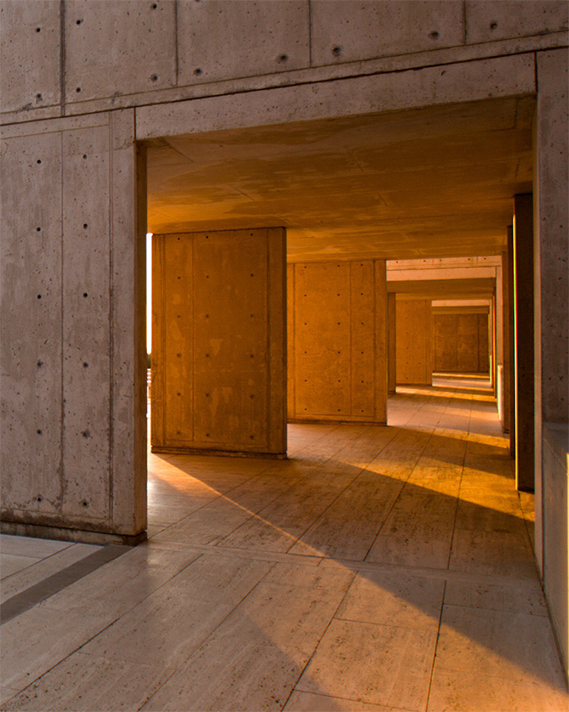
Through beautiful architecture, Kahn was able to bring sunshine to each remote corner.
Image courtesy of: Los Angeles Times, photographed by: Claudia A. Miranda
Kahn implemented many of the designs he learned about through his work on the Richards Medical Research Laboratories at the University of Pennsylvania. Hoping to improve potential over-crowding problems led Kahn to design a more open layout at the Salk Institute. Furthermore, it was in Pennsylvania that Kahn realized the benefits of separating research spaces from the utilities infrastructures. This was intended to limit the amount of “research disruption” that occurs due to building maintenance.
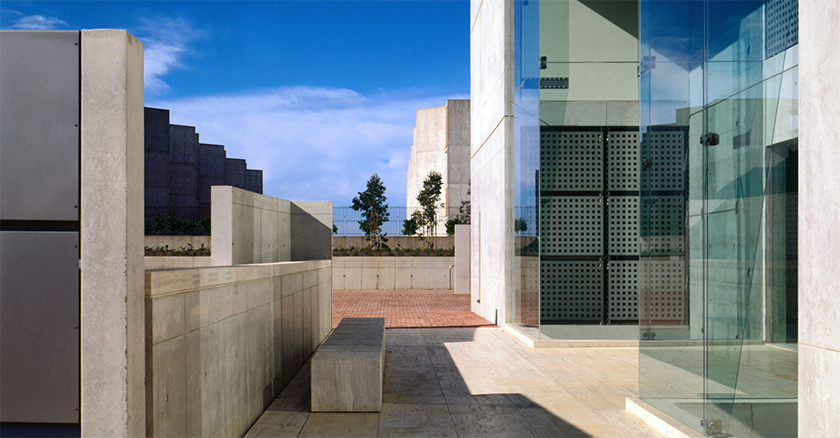
The Institute has a 23,000 square foot conference center and an auditorium which has a capacity of seating 300.
Image courtesy of: CO Architects
Kahn’s design was orchestrated similar to a monastery, “a secluded intellectual community.” The main idea was that the structure have two symmetric buildings with a water stream flowing in the middle of the courtyard to separate the two structures.
Nowhere inside are there walls separating the laboratories, an ode to collaborative work. The concrete was made with volcanic ash, giving it a pinkish glow. The hope is that the scientists have their own view of the Pacific, each study outfitted with a combination of sliding and fixed glass panels in teak wooden frames.
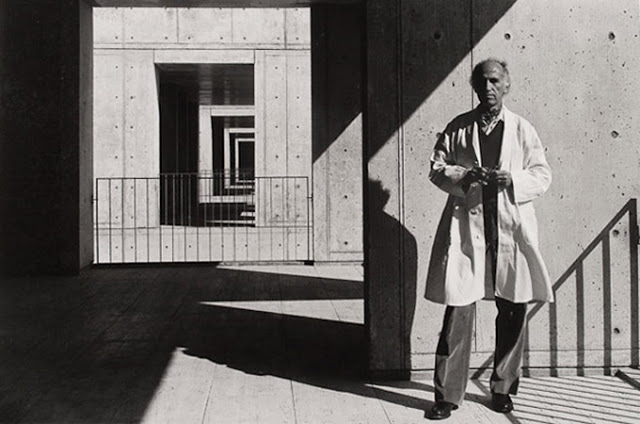
Louis Kahn in front of the Salk Institute, 1975.
Image courtesy of: Modern Design Interior
The Salk Institute is constantly ranked among the United States’ top institutes for research output and quality in the life sciences. 850 researchers in 60 separate groups are employed at the Institute. Areas of focus are consolidated to three areas: Molecular Biology and Genetics, Neurosciences, and Plant Biology.
Topics that are focused upon are: cancer, diabetes, birth defects, Alzheimer’s disease, Parkinson’s disease, AIDS, and the neurobiology of American Sign Language. Over the years, the Institute has been supported by funds awarded in the form of research grants, most from the National Institute of Health and from private foundations and individuals.